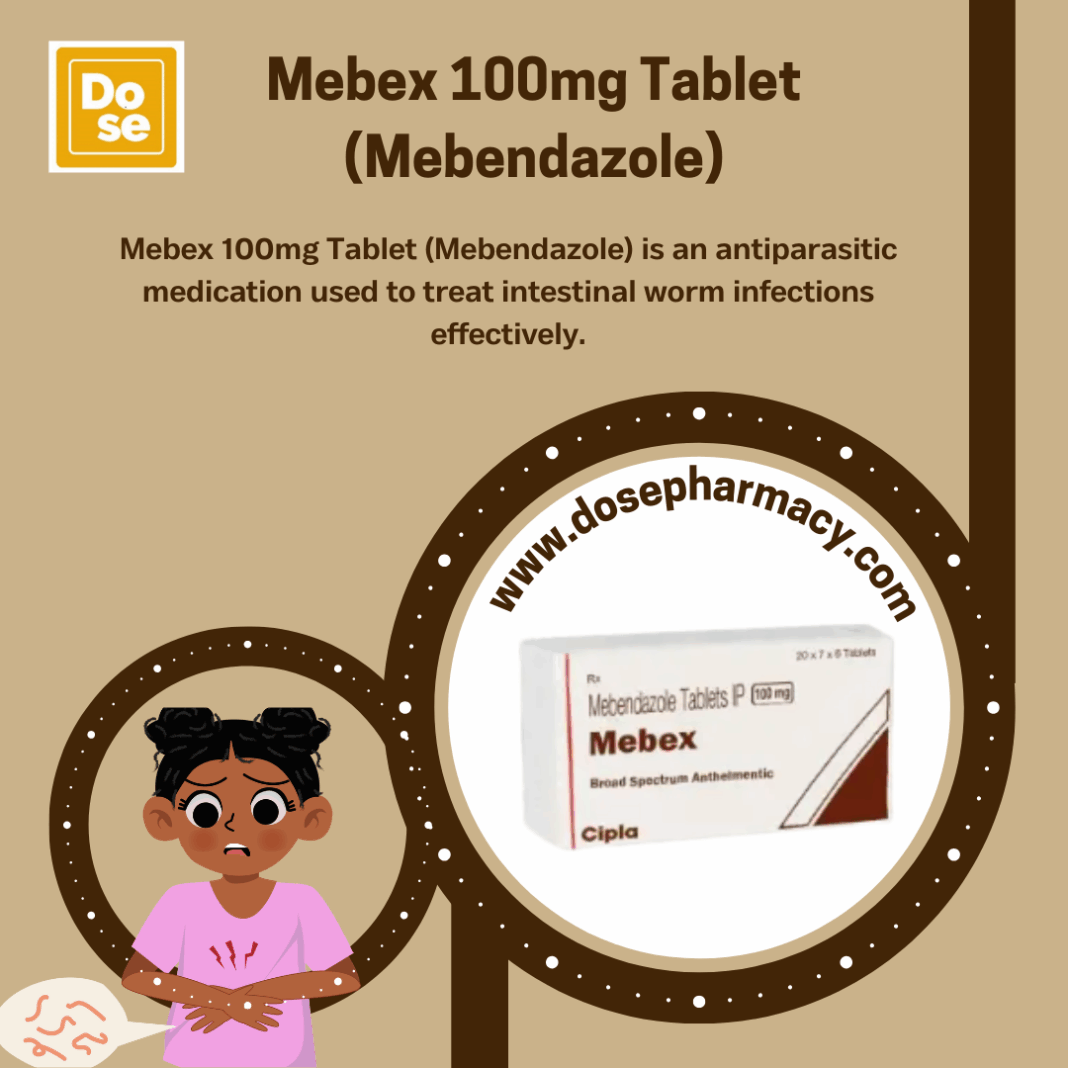Mebendazole over the counter is a widely prescribed antiparasitic medication used to treat a variety of intestinal worm infections, including pinworms, roundworms, whipworms, and hookworms. It works by inhibiting the worms’ ability to absorb glucose, effectively starving and killing them. While it is generally considered safe and effective, taking Mebendazole properly is essential to ensure successful treatment and avoid side effects or reinfection.
This guide outlines everything you need to know about how to take Mebendazole safely and effectively, including dosage instructions, food interactions, precautions, and follow-up tips.
Table of Contents
1. Understanding the Purpose of Mebendazole
Before taking Mebendazole, it’s important to understand what it’s used for. This medication is primarily prescribed for:
- Pinworm (Enterobiasis)
- Roundworm (Ascariasis)
- Whipworm (Trichuriasis)
- Hookworm (Ancylostomiasis, Necatoriasis)
- Mixed helminthic infections
It may also be prescribed off-label for other parasitic infections or in mass deworming programs, especially in children.
2. Available Forms and Strengths
Mebendazole is available in various formulations in dosepharmacy:
- Tablets: Most commonly 100 mg
- Chewable tablets: Ideal for children or those who have difficulty swallowing
- Oral suspension: Easier to administer to younger children
Always use the form prescribed by your doctor or pharmacist.
3. General Dosage Guidelines
The dosage of Mebendazole depends on the type of infection and the patient’s age. The following are general recommendations but should not replace your doctor’s advice:
| Condition | Typical Adult Dose | Children’s Dose (≥2 years) |
|---|---|---|
| Pinworm | 100 mg once | 100 mg once |
| Roundworm, Whipworm, Hookworm | 100 mg twice daily for 3 days | Same as adult dose |
| Mixed infections | 100 mg twice daily for 3 days | Same |
For children under 2 years, Mebendazole should be used only under strict medical supervision.
4. How to Take It: Step-by-Step
To ensure the drug works as effectively as possible:
✅ Follow these steps:
- Read the Label: Always read the medication guide or patient information leaflet.
- Take as Prescribed: Follow the prescribed dosage and duration. Do not take more or less than directed.
- Chew or Swallow: Chewable tablets must be chewed completely before swallowing. Regular tablets can be swallowed whole with water.
- No Need to Take with Food: Mebendazole can be taken with or without food, but taking it with a meal may reduce stomach upset.
- Do Not Mix with Alcohol: While there’s no strong interaction, it’s best to avoid alcohol during treatment to prevent side effects.
- Repeat Doses if Recommended: In some cases like pinworm infections, a second dose may be necessary after 2 weeks to prevent reinfection.
5. Precautions to Ensure Safety
Taking Mebendazole safely involves more than just following dosage instructions. You should also keep the following precautions in mind:
❗ Before taking Mebendazole, inform your doctor if you:
- Are pregnant or planning pregnancy
- Are breastfeeding
- Have liver disease or other chronic health issues
- Are allergic to Mebendazole or similar medications
🚸 For Children:
- Mebendazole is generally not recommended for children under 2 years unless prescribed.
- Use the liquid formulation or chewable tablets for easier dosing.
6. Preventing Reinfection
Reinfection is common, especially with pinworms. To ensure complete recovery and avoid spreading the infection:
🧼 Hygiene Tips:
- Wash hands thoroughly and frequently, especially after using the toilet and before eating.
- Keep fingernails short and clean.
- Change underwear, pajamas, and bed linens daily during treatment.
- Wash all clothing and linens in hot water.
- Clean bathroom surfaces regularly.
👨👩👧👦 Treat the Whole Family:
For infections like pinworm, it’s often recommended to treat all household members simultaneously—even if they don’t show symptoms.
7. Possible Side Effects
Most people tolerate Mebendazole well, but some may experience mild side effects:
🤒 Common Side Effects:
- Abdominal pain
- Diarrhea
- Gas or bloating
- Nausea
🚨 Rare but Serious Effects:
- Rash or itching (possible allergic reaction)
- Seizures
- Liver issues (rare, seen mostly with long-term use)
If you experience any serious or allergic symptoms, seek medical help immediately.
8. Drug Interactions
Mebendazole can interact with other medications. Let your doctor know if you are taking:
- Cimetidine (used for ulcers or reflux): May increase Mebendazole levels in the blood.
- Metronidazole (antibiotic): Risk of severe skin reactions.
- Anti-seizure medications: May reduce the effectiveness of Mebendazole.
Always inform your healthcare provider about all medications, including over-the-counter drugs and supplements.
9. What If You Miss a Dose?
If you’re on a multiple-day treatment and miss a dose:
- Take it as soon as you remember.
- If it’s almost time for the next dose, skip the missed one—don’t double up.
- For one-time treatments (like for pinworms), a missed dose may mean you need to reschedule with your provider.
10. Storage and Handling
- Store Mebendazole at room temperature (20–25°C or 68–77°F).
- Keep the medication away from moisture, heat, and direct light.
- Keep out of reach of children and pets.
Final Thoughts
Mebendazole is a trusted and effective treatment for parasitic worm infections when taken properly. Following the correct dosage, practicing good hygiene, and monitoring for side effects are key to getting the best results. For ongoing symptoms or repeated infections, always consult a healthcare provider for guidance.
If you’re treating an infection like pinworms, don’t just rely on medication—clean your home thoroughly, treat your family if necessary, and stay vigilant for signs of reinfection.



